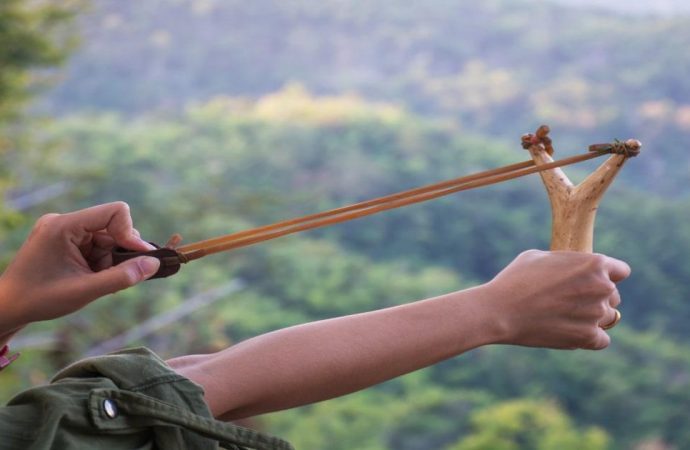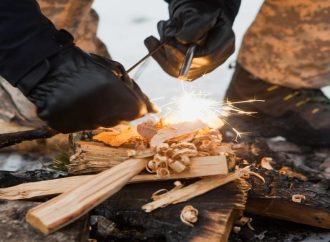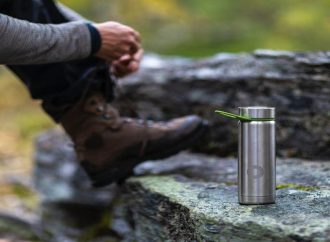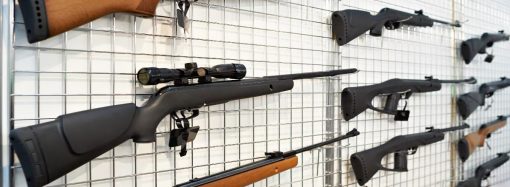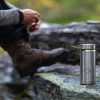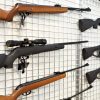In Britain, slingshots for preppers to use are legal weapons so you are able to practice using them in preparation for survival settings, and with a little practice and know-how of how they work.
In Britain, slingshots for preppers to use are legal weapons so you are able to practice using them in preparation for survival settings, and with a little practice and know-how of how they work, you’ll be a pro in no time, catching your next meal or defending yourself and your loved ones.
To fire a slingshot, all you need to do is place the ball bearing or pellet in the rubber, plastic or leather grip, pinch it slightly and pull it back, then let go. It’s as simple as that.
Your own technique will develop over time, but some people like to close their non-dominant eye, and some people tilt their head 45 degrees to get a better sight down the slingshot. Always be careful the band doesn’t snap back towards your face as it will really hurt!
Types Of Slingshots For Preppers
With 3 main types of slingshots, there are a range of features to consider when looking to get your very own one. Let’s look at these in more detail to see which could be the right one for your needs.
Traditional Y-Shape
First commercialised in 1918, these traditional Y-shape slingshots were made using wood and natural rubber. However, nowadays they can be found with frames made from wood but also plastic and metal for enhanced durability.
It’s the typical Bart Simpson shape and the most minimal of designs, you can even build one yourself if you’re in a bind, and with a little practice you’ll be knocking down cans from 15-20ft away.
Wrist Supported
As the original Y-shape began to increase in popularity, other types of slingshots were designed. One of these was the slingshot with wrist support, which allowed manufacturers to increase the power behind the slingshot in the rubber, but also provide support to the user through the addition of the wrist support.
Due to this, wrist supported slingshots are hard and fast in comparison to more traditional models, making them ideal for survival. However, they are typically larger and heavier, making transport more of a challenge, but there are some foldable models of slingshot available to buy.
Slingshot Bow or Slingbow
These were designed to allow the user to kill larger game than what the previous two types are capable of. They are an alternative to bows or crossbows, however a lot more compact, and you can make your own.
There are some pretty cool designs around for these, however in a survival situation they are going to be bulky with lots of moving parts which could get damaged easily and need specialist repairs.
On the other hand, they look bad ass and can fire pellets, ball bearings and bolts at high speeds and could easily take an eye out if used for self-defence.
Benefits Of Slingshot For Survival
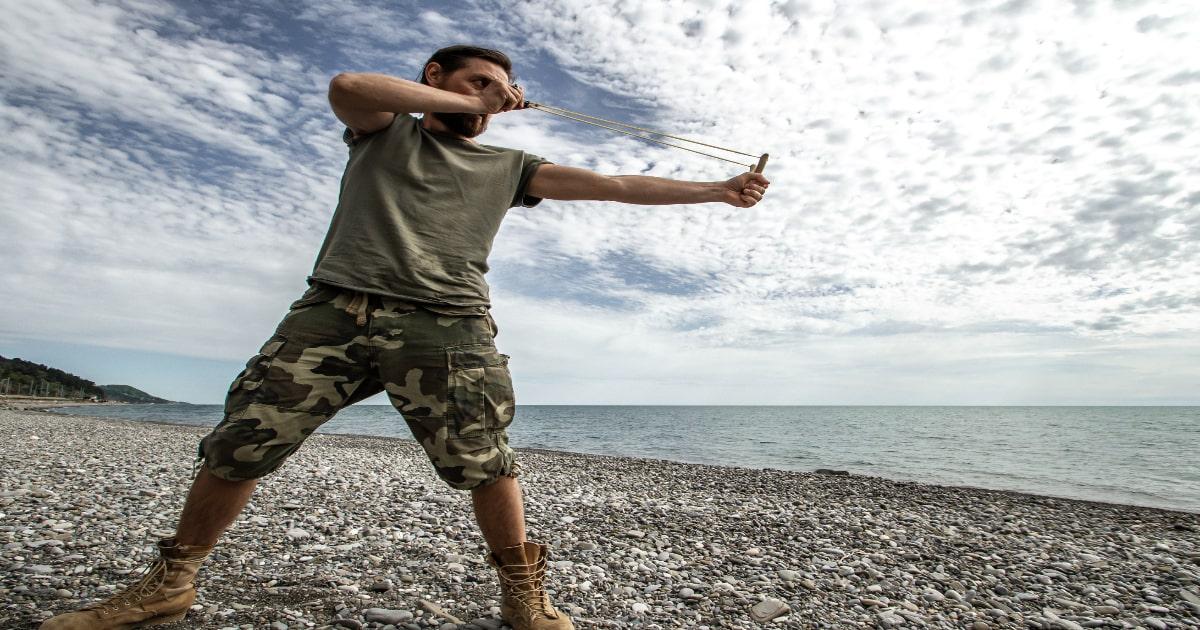
There are 3 main benefits of using slingshots for preppers as a tool for survival.
Hand-eye coordination development
Shooting in general requires a good level of hand-eye coordination. However, shooting with accuracy using a slingshot requires a great deal more skill because as well as aiming in the direction of your target, you have to take into account aspects such as the distance and the resistance from the wind.
As the weather in Britain is very interchangeable, it is important for preppers to consider this and how it would affect their desire for survival. Practice, practice, practice on paper targets and before long the gear will become part of your body and mind, and hitting your target will be as easy as throwing a tennis ball at it.
Portability
By far the lightest projectile weapon, slingshots for preppers are also compact enough to be able to keep in your jean pocket. This means that they can be always carried on your person and used when needed without having to worry about transporting it and the ammunition, like you would have to do if carrying a firearm. Some models even have a space in the handle to carry all of the ball bearings.
Usability
Although they can be difficult to master, they are a weapon that can be used by anyone. As a result, in a survival setting, they can be used by all to protect yourselves, even children will get a pretty good shot with minimal training. Over time, the accuracy will develop, but until then at least you have access to a weapon however basic.
Slingshot Buyer’s Guide For Preppers
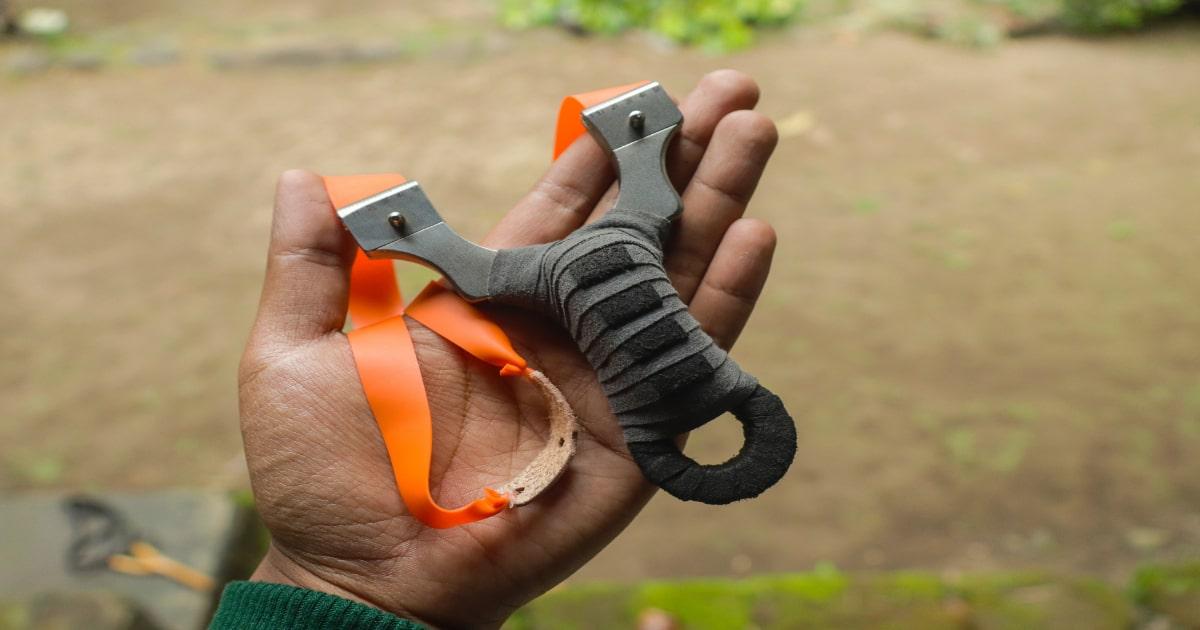
When purchasing a slingshot, there are 3 different elements that you should consider to get the best one for you and your needs.
Material – plastic, wood or metal?
Plastic: This option is the most economical of the three. Depending on the type of plastic used, these can also be very lightweight but still durable, for example, glass-filled nylon.
Wood: A traditional style of slingshot that is typically a Y-shaped piece of wood that has a rubber band attached. Ideal if you are looking for that rustic style, and can be created quite easily if you’ve bugged out to the forest.
Metal: Both light and strong, metal frames are the best of the three, however, they are the most expensive. A metal slingshot will last you for years and cope with any bumps and bashes.
Bands – flat bands or rubber tubing?
Flat Bands: These are typically quicker and more accurate due to the ‘snapback speed’ element of their design. The high accuracy of them is a great deterrent for any potential attackers, as you can demonstrate this to them by targeting an area of their body or face.
Some of the best slingers around use and swear by flat band catapults, but they can be prone to snapping so if you chose this one, always have at minimum of five to ten bands pre-bought as backups in your bug out bag.
Rubber Tubbing: These are the better option if you are looking for something that is going to last a good period. This is particularly useful for hunting small game as it is more reliable after a long period of use.
As well as this, there is a greater variety of rubber tubing catapults available which means that you can find the one that is the best feel for you. As a prepper in the UK, this would be useful as the majority of the game will be small in a survival setting.
Sight
This improves the accuracy of the slingshot. These are especially useful if you are a beginner or want to spend less time practising and spend your time prepping elsewhere. Further to this, slingshots with sights are invaluable when hunting small or fast game as they allow for greater accuracy.
They become less useful when dealing with larger opponents, such as other humans or large animals close up. Don’t buy a slingshot with a laser sight, they’re just gimmicky and won’t help with survival.
Hand grip
A comfortable grip is key to ensuring that you get the most out of your slingshot. This helps with accuracy, but also helps to reduce fatigue; if the slingshot is more comfortable then you will be able to use it for longer periods of time without strain on your hand or wrist.
Look out for handsets with ergonomic or contoured slingshot handles as these are designed with this in mind.
Hollow Handles
These are used to provide space to store things like ammunition and additional bands. However, in a survival setting these could be used to store a multitude of essential items such as tinder, feathers or matches you want to keep out of the elements.
Most handles will hold at least 50 balls, and when you’re practicing, make sure to bring a strong fishing magnet on a piece of string so you can find and reuse any metal ball bearings you’ve fired which may land in grass.
Summary
Slingshots for preppers are a great weapon for survival in the UK due to being small to transport and hunt small game. They’re a compact and easy to use weapon and tool that is invaluable for survival. Preppers who like the idea of travelling light but having a strong weapon at hand will benefit from the use of a slingshot in their bug out kit.

